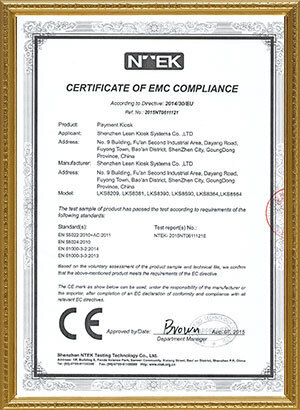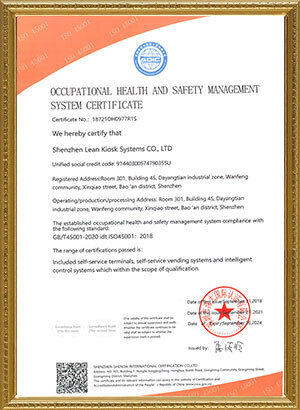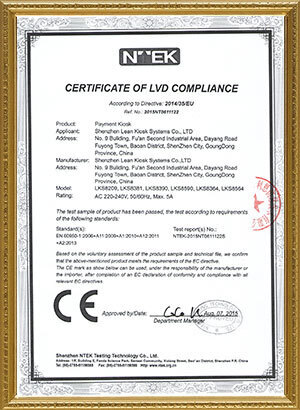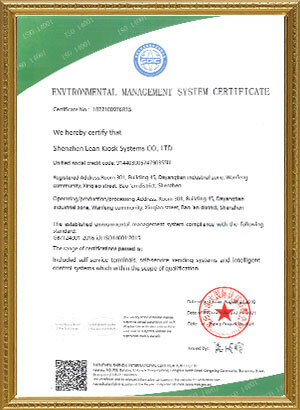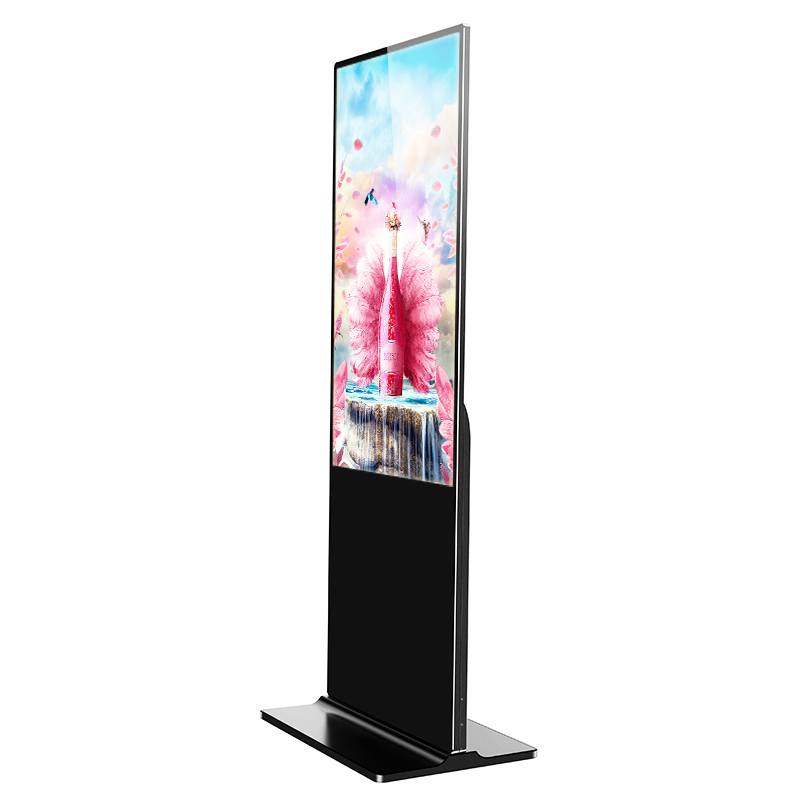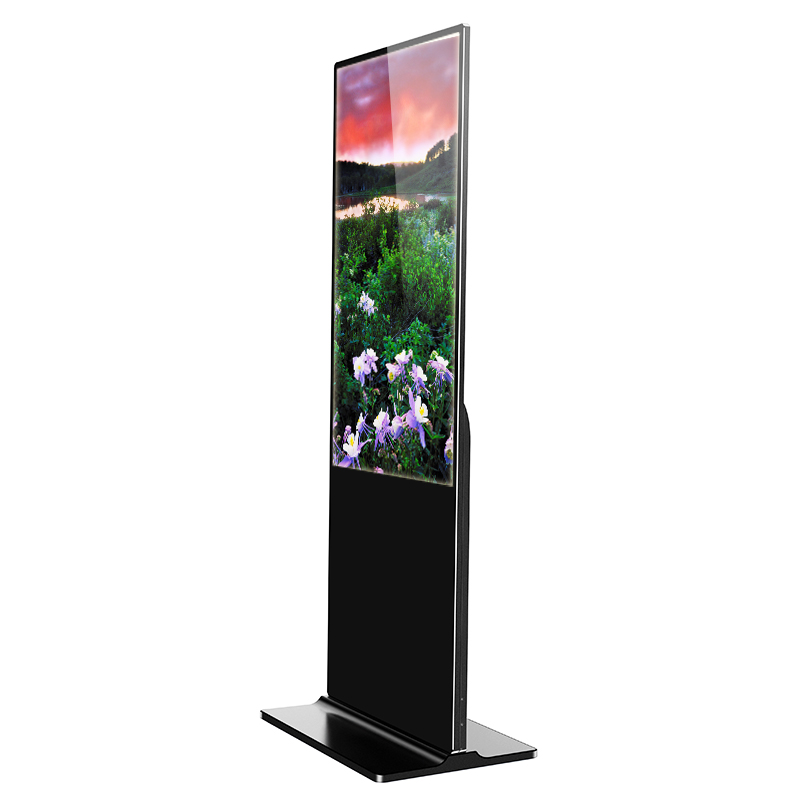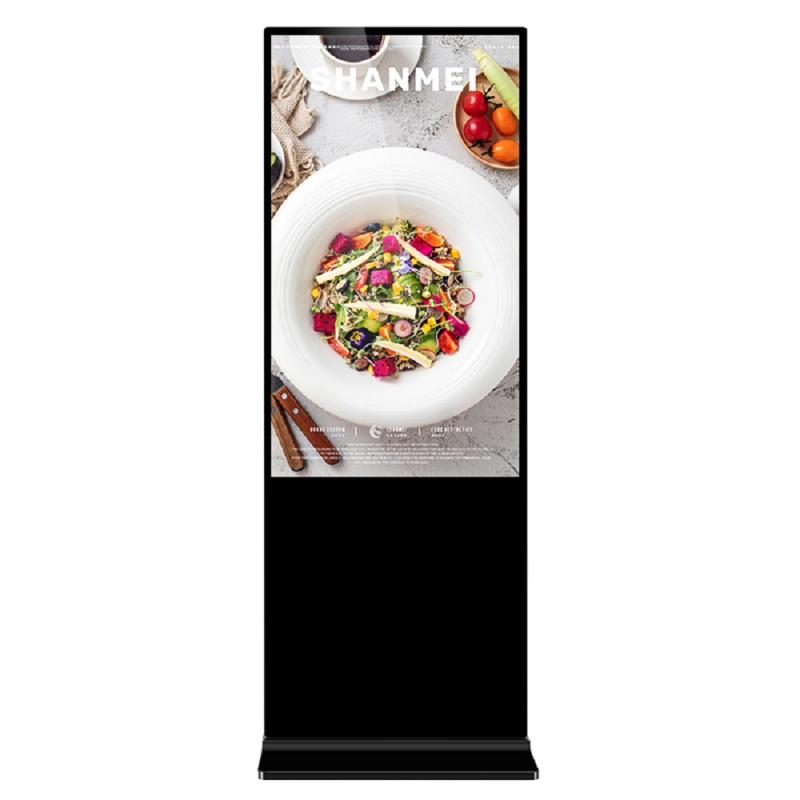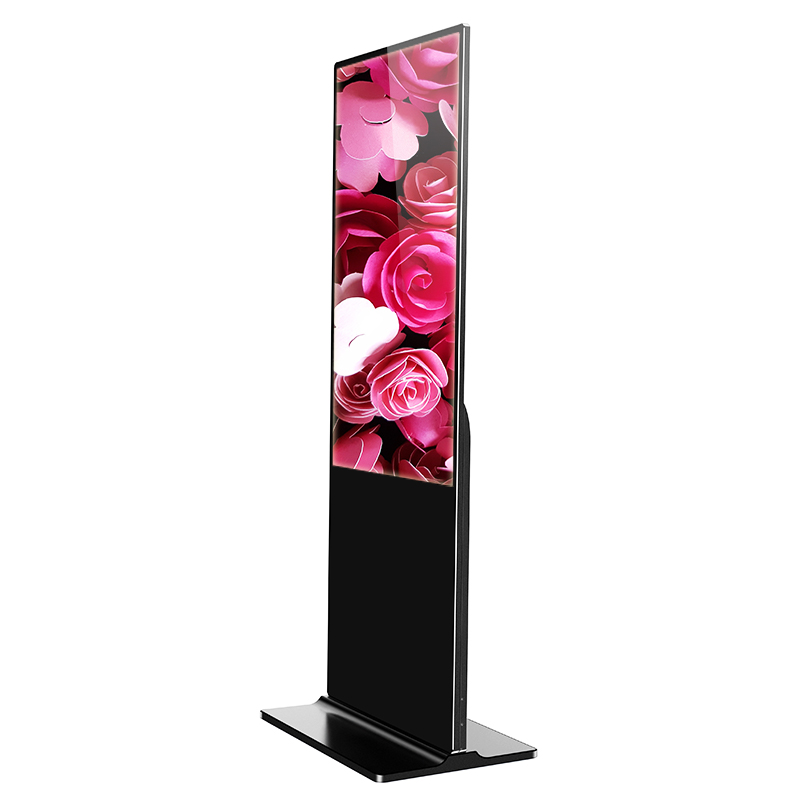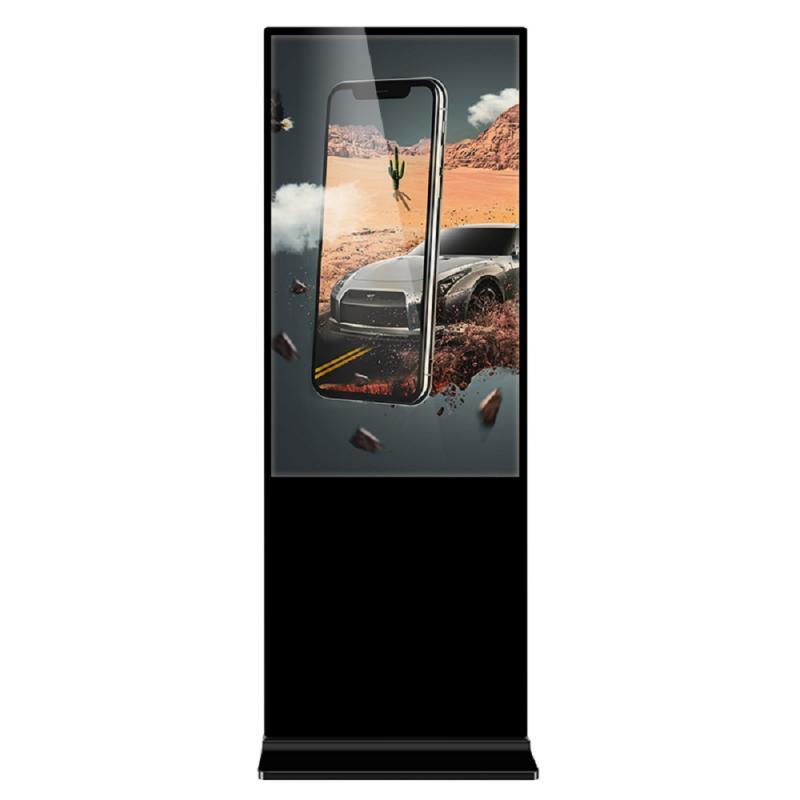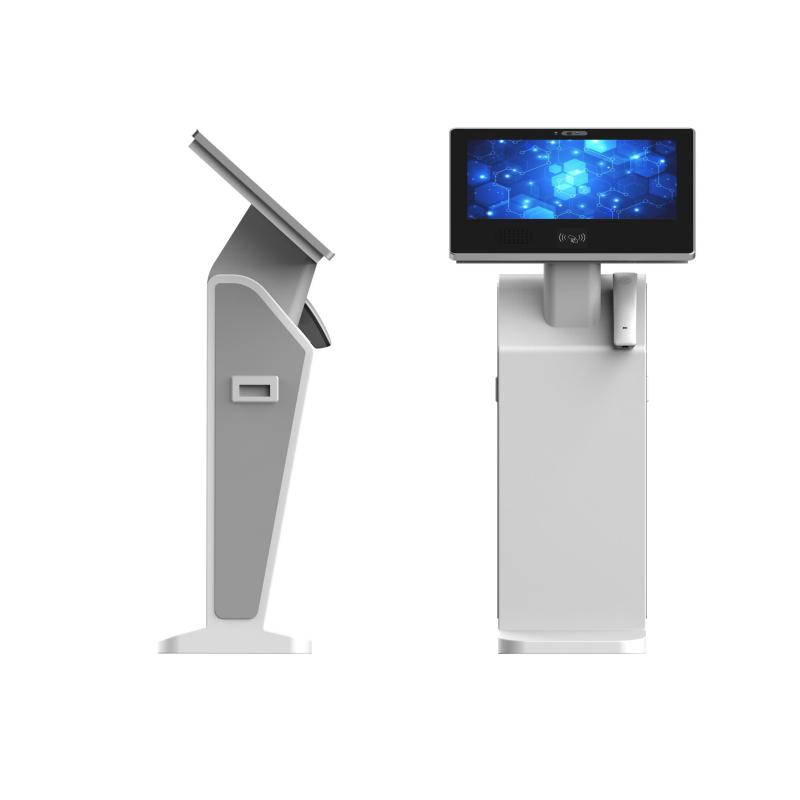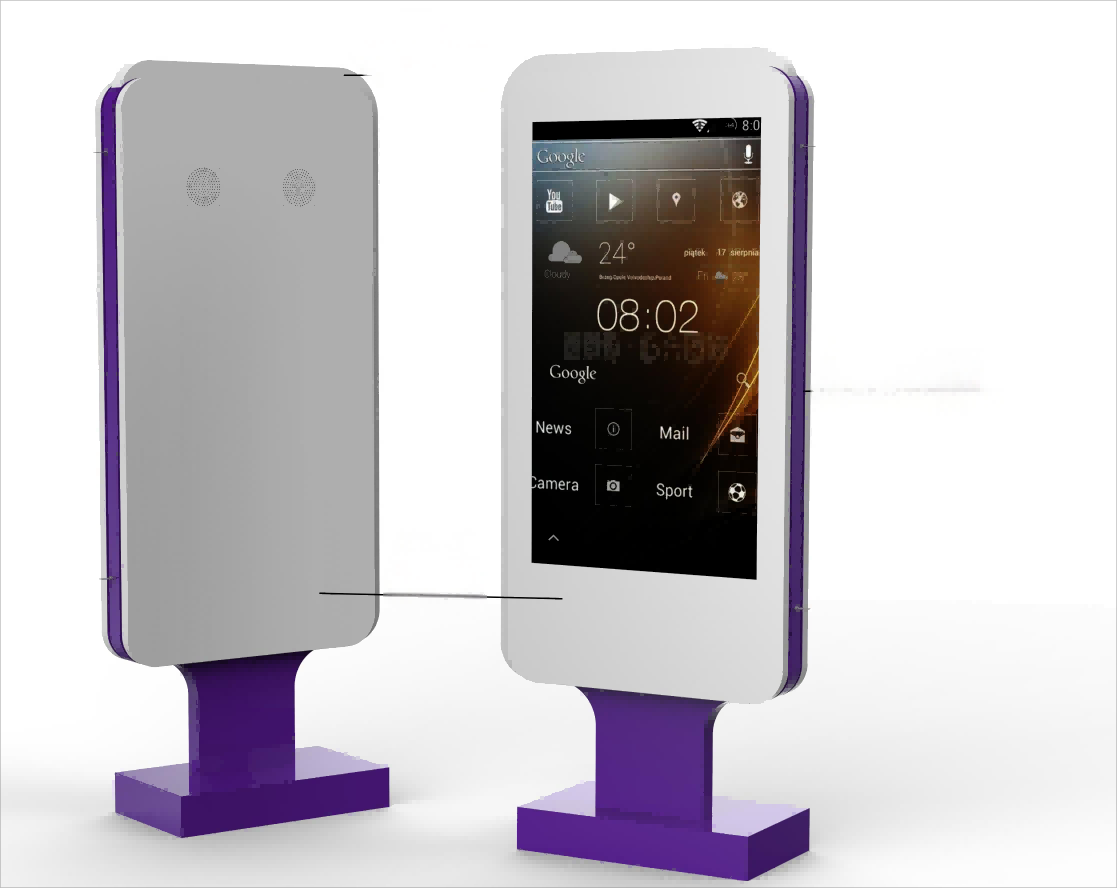






—— Bill from America
—— Jack from United Kingdom
—— James from Russia
—— Mike from America
—— James from Iran
—— James from America
Product Details:
| Place of Origin: | kiosk manufacturer |
| Brand Name: | Lien |
| Certification: | FCC, CE, ROHS |
| Model Number: | LKS-8379 |
Payment & Shipping Terms:
| Minimum Order Quantity: | 10 UNITS |
|---|---|
| Price: | $ |
| Packaging Details: | Strong Case |
| Delivery Time: | 5-6 weeks |
| Payment Terms: | TT |
| Supply Ability: | 5000 units per month |
A 43-inch touch screens digital kiosk display is a self-service terminal equipped with a digital screen that provides information, services, or interactive experiences to users, often featuring touchscreen technology for navigation and engagement.Kiosk display Specifications
Sceen Size | 42 | 46 | 47 | 55 | 65 |
Max Resolution | 1920*1080 | 1920*1080 | 1920*1080 | 1920*1080 | 1920*1080 |
Aspect Ratio | 16:9 | 16:9 | 16:9 | 16:9 | 16:9 |
Brightness | 360cd/m2 | 400cd/m2 | 400cd/m2 | 400cd/m2 | 360cd/m2 |
Contrast Ratio | 1400:1 | 4000:1 | 1600:1 | 1600:1 | 4000:1 |
Viewing Angle | 89/89/89/89 | 89/89/89/89 | 89/89/89/89 | 89/89/89/89 | 89/89/89/89 |
Response Time | 6ms | 8ms | 8ms | 8ms | 8ms |
colour | 16.7M | 16.7M | 16.7M | 16.7M | 16.7M |
Operating Temperature | 0°C~40°C | 0°C~40°C | 0°C~40°C | 0°C~40°C | 0°C~40°C |
Storage Temperature | -10°C~50°C | -10°C~50°C | -10°C~50°C | -10°C~50°C | -10°C~50°C |
Power Consumption | 55W | 75W | 82W | 115W | 157W |
Split Screen | Yes | Yes | Yes | Yes | Yes |
Network Function(Optional) | Android/Windows | Android/Windows | Android/Windows | Android/Windows | Android/Windows |
Video Format | AVI/MKV/FLV/TS/VOB/MPG/MP4/RM/RMVB | ||||
Photo Format | JPG/JPEG/BMP | ||||
Ports | SD/CF/USB | ||||
Repeat mode | Repeat All/Repeat None/Repeat One | ||||
Play Type | All/Photo/Music/Photo+MP3/Moive/Play list | ||||
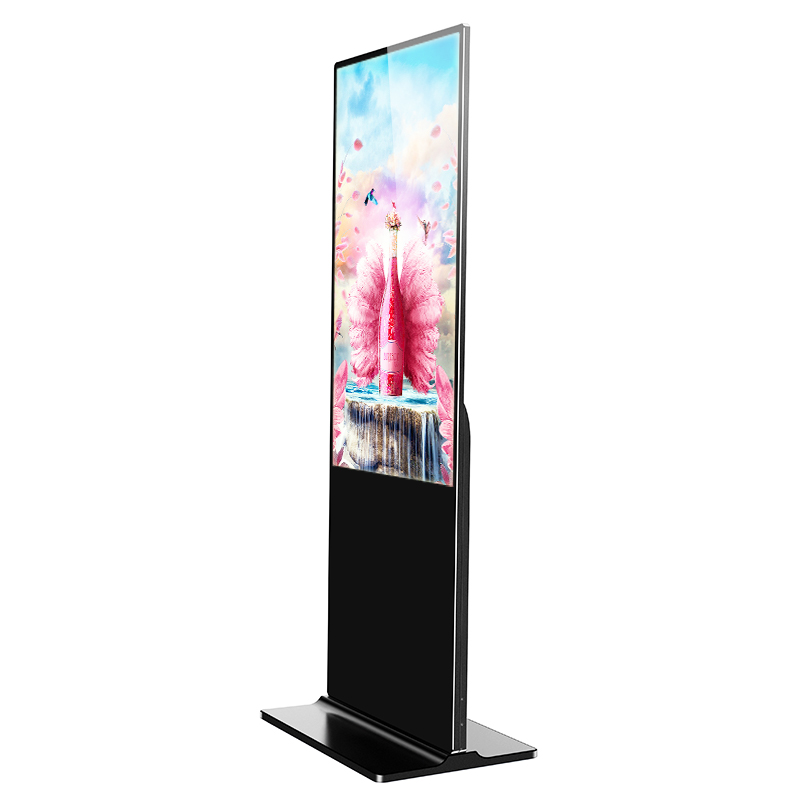
Retail: Self-checkout, product information, and promotions.
Hospitality: Check-in/out, local attractions, and dining recommendations.
Transportation: Ticketing, schedules, and wayfinding in airports and train stations.
Healthcare: Patient check-in, appointment scheduling, and health information.
Education: Campus maps, event schedules, and course registration.
Corporate: Visitor management, room booking, and company announcements.
Entertainment: Ticket sales, exhibit information, and interactive experiences in museums and theaters.
Government: Permit applications, information dissemination, and public service announcements.
Banking: ATM services, account inquiries, and digital signage for promotions.
Food Service: Self-ordering systems, menu displays, and loyalty program information in restaurants and cafes.
·
1. Display Screen: A large digital screen (LCD or LED) for presenting information and interactive content to users.
2. Touchscreen Interface: Capacitive or resistive touchscreen technology for user interaction, enabling navigation and input directly on the screen.
3. Computer or Media Player: A built-in computer or media player to run the kiosk software, manage content playback, and process user inputs.
4. Enclosure: A robust and secure enclosure housing all components, designed to withstand public use and potentially harsh environments.
5. Input Devices: Depending on the application, additional input devices may include keyboards, barcode scanners, RFID readers, or biometric sensors.
6. Output Devices: Components such as speakers for audio output, printers for receipts, or additional displays for advertising or supplementary information.
7. Connectivity: Ethernet ports, Wi-Fi, or Bluetooth connectivity for network access, content updates, and remote management.
8. Power Supply: Internal power supply or connections for external power, ensuring continuous operation.
9. Sensors: Optional sensors like proximity sensors or motion detectors to enhance user interaction or trigger specific actions.
10. Security Features: Measures such as locks, tamper-resistant screws, and security cameras to prevent theft, vandalism, or unauthorized access.
1. Operating System: Specialized OS for kiosk applications.
2. Kiosk Application Software: Provides UI and specific functionalities.
3. Content Management System: Manages and updates displayed content remotely.
4. Web Browser/Engine: Displays web-based content and applications.
5. Remote Monitoring Software: Monitors kiosk status and updates remotely.
6. Security Software: Ensures data protection and prevents unauthorized access.
7. Payment Processing: Integrates with payment gateways for transactions.
1. Approach the Kiosk: Walk up to the 43-inch touch screens digital kiosk display.
2. Select Language (if applicable): Choose your preferred language for the interface.
3. Navigate the Interface: Use the touchscreen to browse options or input information as instructed.
4. Select Service: Choose the service or information you need from the available options displayed on the screen.
5. Follow Prompts: Follow on-screen instructions to complete tasks such as making a payment, accessing information, or interacting with applications.
6. Complete Transaction: Review the transaction details presented on the screen and confirm if necessary.
7. Finish and Exit: Once finished, take any receipts or documents provided and ensure you've completed all necessary steps before leaving the kiosk.
1. High-Traffic Locations: Such as airports and malls to handle transactions and information efficiently.
2. Customer Service Enhancement: Adding points of access in retail, hospitality, and healthcare settings.
3. 24/7 Accessibility: Providing continuous service outside regular hours without staff.
4. Operational Efficiency: Streamlining processes like self-checkout in retail and quick-service restaurants.
5. Interactive Engagement: Enhancing visitor experiences in museums, exhibitions, and educational settings.
1. Warranty: Comprehensive coverage for parts and labor.
2. Maintenance Services: Regular check-ups and on-site repairs.
3. Technical Support: 24/7 hotline and remote troubleshooting.
4. Software Updates: Ensure regular software updates to improve security, add new features, and maintain compatibility with evolving technologies.
5. Response Time: Guaranteed response within [specified time frame].
1. Purpose and Functionality: Determine specific needs such as payment processing, information dissemination, or interactive engagement.
2. Hardware and Software Requirements: Assess required components like touchscreen capabilities, security features, and integration with existing systems.
3. Customization and Branding: Consider options for customizing the kiosk's appearance and user interface to align with branding and user experience goals.
4. Support and Maintenance: Ensure availability of after-sales support, warranty coverage, and maintenance services to ensure smooth operation and longevity.
Choose us as your 43-inch touch screens digital kiosk display manufacturer for our commitment to innovative design, reliable performance, and seamless integration. We offer customizable solutions tailored to your needs, backed by extensive expertise in kiosk technology and a strong focus on customer satisfaction. Trust our proven track record in delivering high-quality products and comprehensive support for your project's success.
43-inch touch screens digital kiosk displays offer numerous advantages including enhanced customer convenience through self-service options, efficient operations with reduced wait times, 24/7 accessibility, space optimization, and interactive engagement with customizable content. They streamline transactions, improve user experiences, and support various applications from retail to healthcare and beyond.
Address: No. 99-15, Fuan intelligent manufacturing Industrial Park, Dayang Road, Fuhai Street, Baoan District, Shenzhen, China


